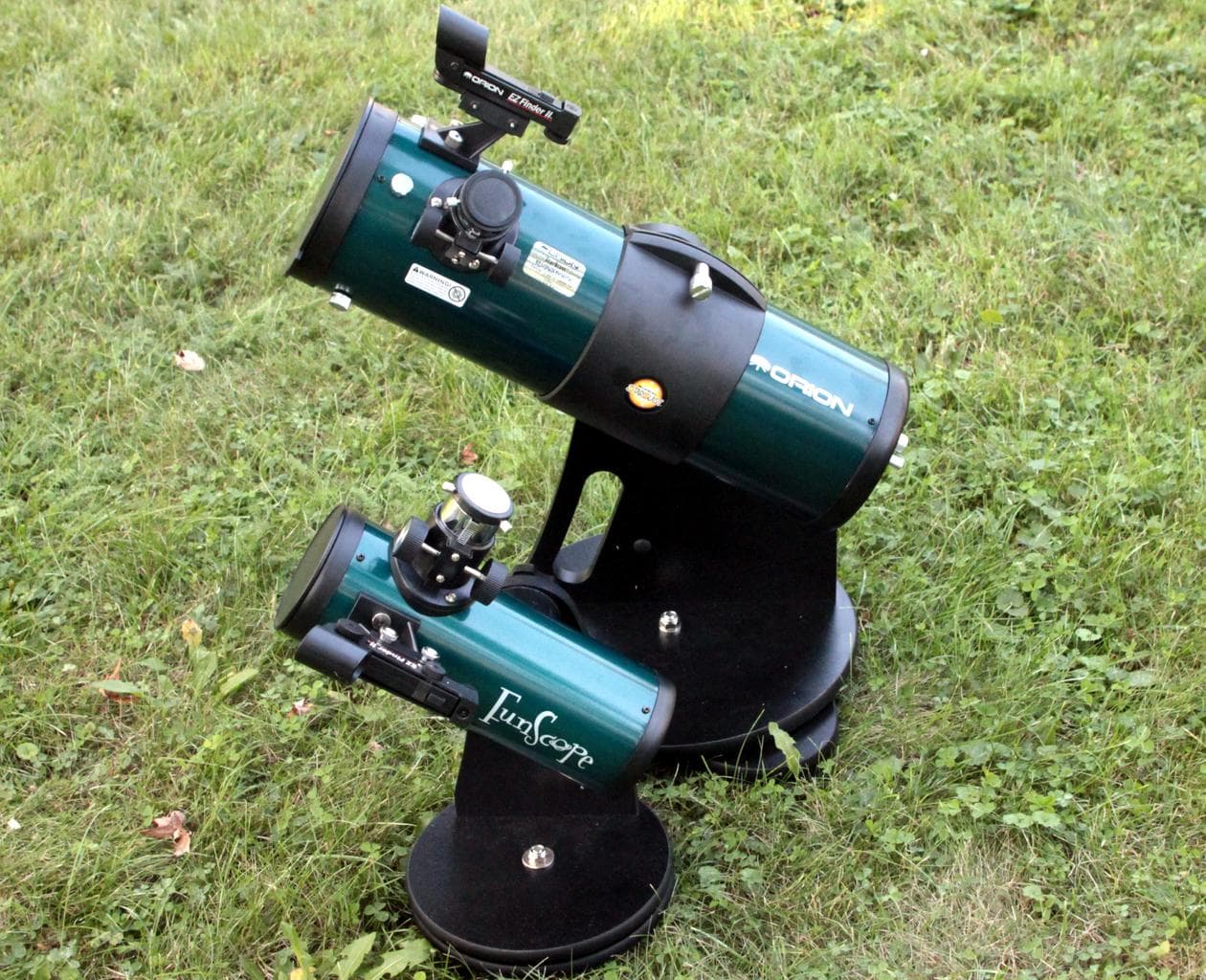
with David Fuller

It's time to stop telling first-time stargazers "Buy binoculars first"
It's time to stop telling first-time stargazers "Buy binoculars"

"Buy binoculars first" used to be good advice. A decent telescope was, in inflation-adjusted currency, a lot more expensive. Also, there were more valid uses for binoculars should the astronomy "bug" not bite. Sporting events did not have jumbo-tron screens that showed instant replays. Long focal length camera lenses were not the norm. A camera on every cell phone was just a gleam in Gene Roddenberry's eye.
As the holiday gift-buying season approaches (sorry, but there's already Christmas decorations in the stores near me), the question will get asked,
"Hey... you're into astronomy, right? What telescope should I get my spouse / child / relative?"
If not this year, sometime in the near future, you are likely to be asked. If you are looking to buy one for someone, you may be asking someone you know that question. You may receive the advice, "Buy binoculars first."
Please.
DON'T.
In addition to that, please don't buy or recommend the least expensive, "real-looking" refractor-style telescope. A table-top reflector telescope is probably a better option, such as an Orion Firstscope / Skyscanner / Astroblast, a Celestron Firstscope or an Edmund Astroscan (among others).
Today, a lot of the tripod-based offerings will be at the forefront of many people's gift giving ideas, because they "look" like a "real" telescope - lens at the front, eyepiece at the back. But any amateur astronomer who's been at this a while and helped a fellow, new stargazer with their <$100 scope knows the problems with these offerings: Shaky tripods, bad mounts, useless finderscopes, and sometimes, still arriving with 0.965" eyepieces (the standard these days is 1.25"). The main lens or tiny mirror may indeed be usable, but most of the rest of it will be an exercise in frustration for many people. And there's many different types of telescopes, and the eyepiece location is just a matter of the optical design.
So the call will go out from some of the amateur astronomers who have heard the advice all their lives: "Buy binoculars instead!" I have arrived at the belief that there are some significant problems with this advice now:
- Not all low-cost binoculars are any good these days. From useless coatings to bad prisms to pinched optics, I've used less expensive ones; some are downright horrible to look through. To be any good, I think they need to be at least in the $80 - $100 range, like Orion Scenix 7x50's. A Celestron Firstscope or Orion Funscope can be had for $40 to $60, has larger aperture, and can see planetary detail out of the box (well, the Funscope really needs a barlow, but that's still in the $80 to $100 range).
- 7x50 or 10x50 binoculars won't show any planetary detail. These are the ones with wide fields of view, that OUGHT to be the recommendation for binoculars (please, not the smaller field of view Celestron 15x70's that MUST use a VERY heavy duty tripod!). Given the spread of light pollution, the easiest things for most people to find these days are planets. Sure, the Moon looks good in binoculars - once or twice - but if all you can see is Jupiter's moons, aren't you longing to see the equatorial bands? The rings of Saturn? Mars as... well, at least a disk? (Mars is small no matter what scope you're looking through!)

- Many of the small tabletop telescopes ranging from $40 to $200 are easily stored, and can showwide fields of view. Although that field of view is not the same as binoculars, is sufficient to allow the new user to star hop. And they can do so step by step, while consulting star charts as needed, rather than having to memorize the hop without putting binoculars down.
- It's easy to share with others with a scope. Short of investing in a parallelogram mount for binoculars (which may cost more than the binocs themselves!), it is far more difficult to point to a spot in the sky and then tell someone else to point binoculars in the same location. With a rich field, short focal length telescope, it is easy for parents to help children, for example. They can find the object, then let the child look.
- Most importantly, think of what people WANT. If they think "telescope" when they think "amateur astronomy," how disappointing would it be to a teen or young adult to be presented with binoculars as a gift, instead of a telescope?
True, these small table-top scopes have an optical aberration called coma because they have "fast" mirrors and optical systems. True, in order to see planets, an additional investment of $30 or $40 for a barlow is needed for seeing the planets. But they are dead simple to use, and offer BOTH the wide field of views AND enough magnification to be able to see planets, albeit at small image scales, but still visible. I find many people are surprised at how small Jupiter and Saturn look even in an 11" Schmidt-Cassegrain style telescope or 10" reflector. But binoculars will never show those details like even the smallest, least-expensive 76mm tabletop reflector can with a barlow lens.
YES, binoculars are still incredibly useful for astronomy, and sometimes the MORE appropriate instrument for viewing some objects in the sky, and finding a stap-hop trail, or simply sweeping the Milky Way. But given gift-giving budgets, aren't we better off recommending the tabletop scopes first, and THEN saying, "Buy binoculars next" - or at least after the stargazer has whet their appetite and purchased a larger/better "upgrade" telescope?
I'd argue that, in most circumstances, we are. And the receiver of the telescope will be better off too.
